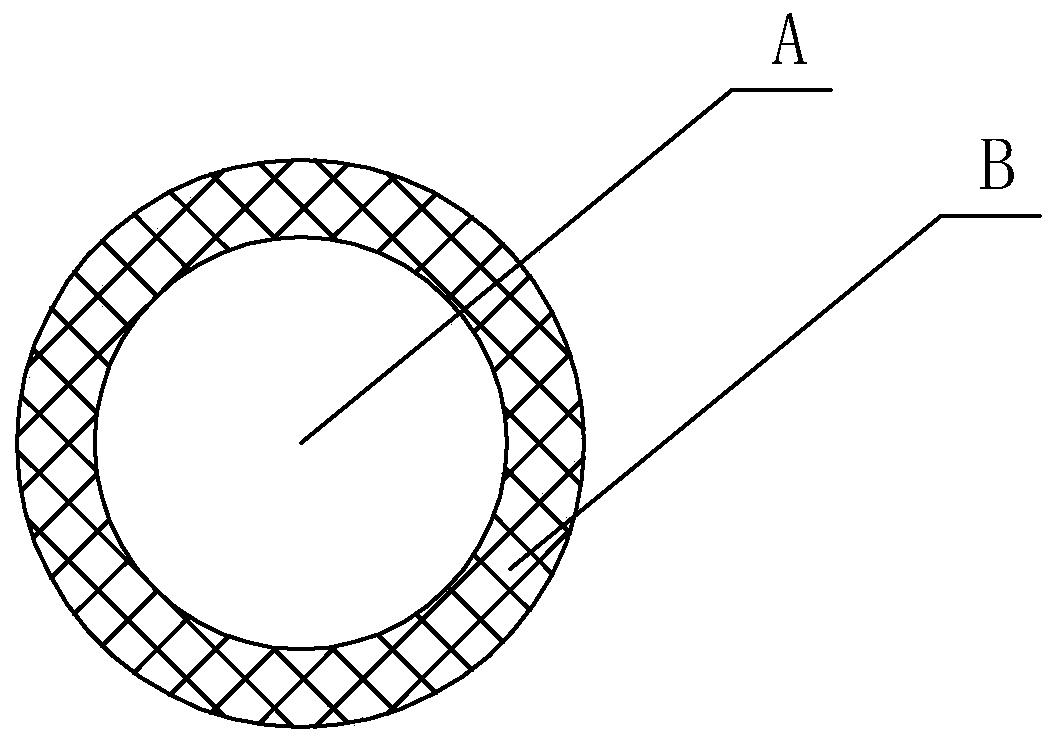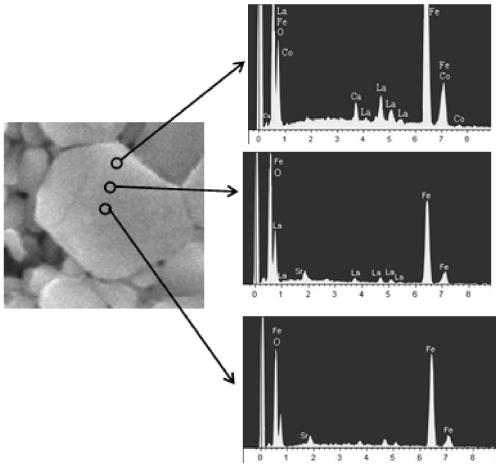Ferrite permanent magnet material with core-shell structure and preparation method of ferrite permanent magnet material
A technology of ferrite permanent magnet and core-shell structure, which is applied in the direction of inorganic material magnetism, can solve the problems of rising costs, achieve good magnetic properties, high coercive force, and reduce costs
- Summary
- Abstract
- Description
- Claims
- Application Information
AI Technical Summary
Problems solved by technology
Method used
Image
Examples
preparation example Construction
[0046] A preparation method of ferrite permanent magnet material, comprising the following steps:
[0047] 1) Weigh each initial raw material (Fe 2 o 3 Powder, SrCO 3 Powder, La 2 o 3 Powder, Co 2 o 3 Powder and CaCO 3 powder), and mixed uniformly by wet ball milling; wherein the ball milling solvent is deionized water or tap water, and the ball milling time is 4-6h;
[0048] 2) pre-calcining the material obtained in step 1) at 1200-1300° C. for 1.5-2.5 hours to obtain pre-fired material;
[0049] 3) Coarsely crush the calcined material, and wet ball mill for 15-25 hours until the particle size of the powder is 0.6-1 μm to obtain the slurry M1;
[0050] 4) According to the method of steps 1) to 3), the slurry M2 is obtained, the difference is that the ingredients are mixed according to the proportion of the shell components, and the pre-calcination temperature is changed to 900-1100 ° C, after pre-calcination, the ball mill is 50-100h until the powder particle size is ...
Embodiment 1
[0055] 1) Prepare the following initial materials: Fe 2 o 3 Powder, SrCO 3 Powder, La 2 o 3 Powder, Co 2 o 3 Powder, CaCO 3 powder.
[0056] 2) Weighing, according to Sr 1-x La x Fe 12-y co y o 19 (x=0.02; y=0-0.02) ingredients were distributed and mixed evenly by means of wet ball milling. The solvent during ball milling was deionized water, and the ball milling time was 5 hours.
[0057] 3) Pre-fire the mixed material at 1250° C. for 2 hours to obtain a calcined material.
[0058] 4) Coarsely crush the calcined material, and wet ball mill for 20 hours to obtain powder D 50 Slurry M1 with a particle size of about 0.6 μm.
[0059] 5) Repeat steps 2)-4) to obtain slurry M2, the difference is that the composition of the material in step 2) becomes Sr 1-w- v La w Ca v Fe 12-z co z o 19 (w=0.45; v=0.45; z=0.25), the calcining temperature becomes 1000 ℃ in the step 2, the ball milling time becomes 100 hours in the step 3, and the powder particle size D 50 beco...
Embodiment 2
[0065] The differences between this embodiment and Embodiment 1 are: x=0; y=0.
[0066] The magnetic performance of the magnet that present embodiment obtains is as follows: the thickness of shell layer is 0.3-0.5 μ m, remanence B r =4407Gs, coercivity H cj =4328Oe, maximum energy product (BH) max = 4.63 MGOe.
PUM
| Property | Measurement | Unit |
|---|---|---|
| Thickness | aaaaa | aaaaa |
| Remanence | aaaaa | aaaaa |
| Coercivity | aaaaa | aaaaa |
Abstract
Description
Claims
Application Information
 Login to View More
Login to View More - R&D
- Intellectual Property
- Life Sciences
- Materials
- Tech Scout
- Unparalleled Data Quality
- Higher Quality Content
- 60% Fewer Hallucinations
Browse by: Latest US Patents, China's latest patents, Technical Efficacy Thesaurus, Application Domain, Technology Topic, Popular Technical Reports.
© 2025 PatSnap. All rights reserved.Legal|Privacy policy|Modern Slavery Act Transparency Statement|Sitemap|About US| Contact US: help@patsnap.com



